Over the course of the Vesak weekend, our environment systems and societies class visited the Maldives for a field study. Over the course of 4 days, we were able to visit many different islands, where we looked at energy use, solid waste management, underwater conservation and water security.


Our first visit took us to Maafushi, a local island, south of the capital Malé. This local island gave us an opportunity to look at the first-hand relationship between locals and tourists. We explored both the environmental and economic relationship that came out of this community structure. We were given a tour by island council member, Mr. Hasan Solah, who showed us the way solid waste was managed on the island. On the South side of the island, we looked at a solid waste management facility, otherwise called a garbage dump. Mr. Solah, expressed to us that solid waste management was a new concept on the island, that they were struggling to find an effective method to store the waste, to then be incinerated after. This was one of the issues we noticed as garbage which was not separated, this was then burned for example; plastics, food waste and even dead cats all burned in the same dump. The mismanagement of waste was mainly due to the influx of waste coming in from tourism. According to Mr.Solah, about 7 to 10 tons of waste comes into the dump per day. This value he said comes from the new guest houses and tourist sites on the island. A solution that we discussed is to see how the island could charge the hotels and/or the tourists for the waste coming from the hotels. This would be putting a tax on a negative externality from an economic perspective. The money generated from this tax could be put to use to set up an effective solid waste management facility as well as promoting the reduction of plastics by hotels and tourists.
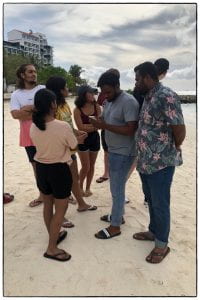

Our next exploration was on the 2nd day where we took a speed boat 20 minutes north towards male, to an island resort known as Embudu village. Here we learned about the energy use on the island and what actions were taken to be more sustainable. On the island there were 5 high powered diesel generators that were used to power most of the energy needs on the island. However, despite having 5, only 2 were used at a time which had a max generation of 480kWh which powered lights, air conditioning and other electrical needs on the island. The interesting thing that they were able to do was also use solar energy despite having the generators. They had two types of solar energy systems, one being the solar water heating systems which use solar energy generated during the day to heat the water used in showers and taps. The other solar energy system used was the solar panels that were used to generate electricity for air conditioning and lights as well; however, due to the limited generation in comparison to the diesel generators, the solar was not the primary source of energy on the island.
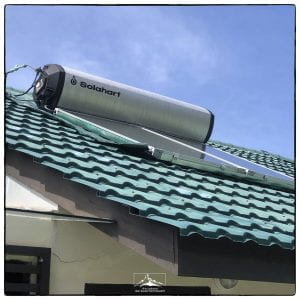
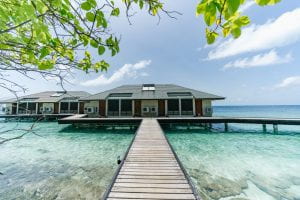
Embudu Village also gave the opportunity to explore the process of desalination of salt water. Taking advantage of their environment being the ocean, the resort in collaboration with the Soneva Foundation, set up a desalination plant using a process known as reverse osmosis to separate the water molecules from the seawater, then mineralized, UV sterilized and then bottle in reusable bottles. This process enabled the resort to generate its own bottled water and not have to rely so heavily on bottled water coming in plastic bottles which is a huge environmental issue of pollution. This process of setting up desalination plants is not specific to Embudu only and is actually a project started by the Soneva Foundation on all of the resorts in the Maldives which has significantly reduced the use of plastic bottles in Maldives. Other than just being used for bottled water, the desalination plant was also used in showers and other water systems on the island except for the toilet water which used seawater.

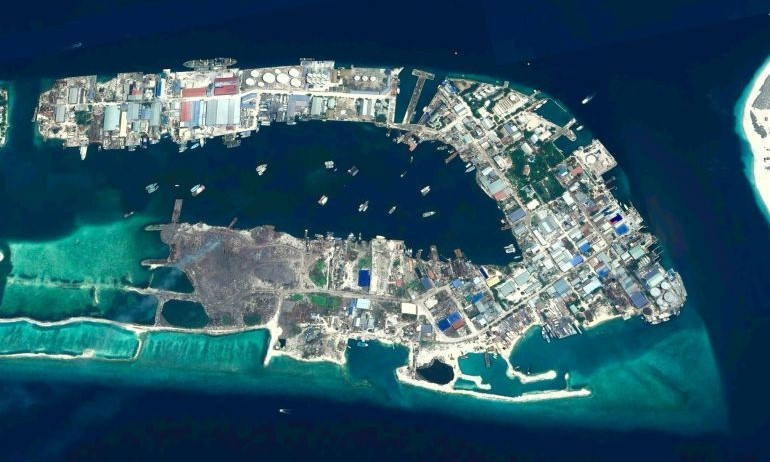
This island was completely a resort so there was no mixture of locals and tourists, this was interesting to view how waste was managed here. What we saw was the solid waste was transported via boat to Thilafushi, an island which we also visited, where garbage was separated using large machinery manually controlled. This separated waste was then interesting wrapped in a polythene like material using farm bale machines. This would enable garbage for effective transportation as they, similarly to wheat bales in the farm, were giant marshmallows. These marshmallows will soon be transported to the other side of the island in which they will be incinerated and unlike Maafushi, the incineration process produced almost 100% steam. This steam would then be used in correlation with According to Mr.Ansar, the head of the Thilafushi garbage operations, this new method of separating and transporting solid waste is a huge improvement from the former project which is still causing issues. The former method of management was a garbage mountain that had been piling up all the waste for years, this waste including plastics that when decomposing, released toxic chemicals which started a fire. This fire had a impact on neighboring islands such as the capital city Malé as well as resorts close by, where the air quality was much lower as well as an impact on tourists as this smell and cloud of gas being blown over towards the resorts, reduced the attraction of said resort and the tourism industry of that area.
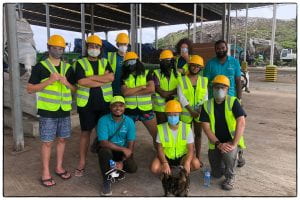
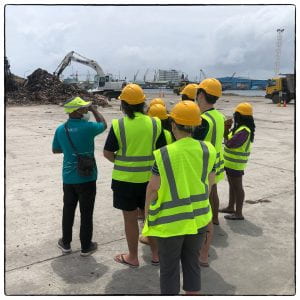
On this trip we also looked at coral restoration or gardening in the Maldives. This was present in Maafushi, where we saw some presence of coral restoration however we did not get too much information on the origin and the timeline of the restoration process at Maafushi. We got most of our information on coral restoration on our last day of the trip on the 16th, at an island in the Malé Atoll known as Vilingilli. This island was declared an environmentally friendly island back in the 20th century so we saw what it meant to be an environmentally friendly island and what measures were taken to be more sustainable. One of the most impressive things we saw was that almost every vehicle on the island was an electric powered vehicle. Even police cars as well as the electric bikes on the island. There were a few petrol/diesel powered trucks on the island needed for heavy lifting and construction but other than that we saw very futuristic example of what a city could look like with a majority of electric cars. However the main point of our visit was to view the coral restoration taking place and we got to see this during a firsthand experience in the water where we snorkeled just off the harbor and saw a range of different marine biodiversity.
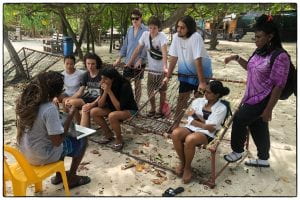

Map of Vilingili- https://samudramaldives.com/where-is-maldives/
The main reason for the islands constant sustainability has been the work done by a local NGO, Save the Beach Maldives, which began in 2008 and we were able to meet one of the original members of the group, Beybe. He explained to us that one of the biggest challenges in his field of work was the relationship with the government which only recently declared Maldives as a Climate Emergency. This former lack of concern for the environment by the government has caused a huge loss of biodiversity and coral life in Villingili. The same harbor we saw coral restoration is the same place where the initial issue began. The harbor being built was a coastal development project that the government had enforced upon Villingili island. The outcome of this harbor being built was the area that had about 97% biodiversity diminished to about 7% biodiversity, however through the process of coral conservation and restoration, the biodiversity in the area has moved to 27%. These figures really demonstrate how harmful our actions as humans can have on marine life as well as how impressive coral restoration is. The process of coral reef restoration is that they are strategies using natural and anthropogenic processes to restore damaged coral reefs. The form that we viewed can be identified as coral gardening which can be seen here in the picture below where corals are attached to metal frames which help provide a structure for future coral to grow on to this substrate. This process is one of the most popular forms of underwater biodiversity conservation in the Maldives.
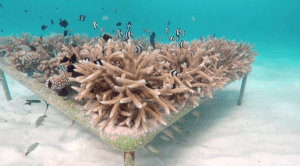
This trip overall was a great experience combined with some great memories and insightful knowledge energy use, solid waste management, water treatment and biodiversity conservation in different parts of the Maldives.
Solid, good words
Dear Nik
Nice job on this reflection about our epic ES&S visit to the Maldives. The Bandos visit was very special! Thanks for organizing it.
Mr. Lockwood